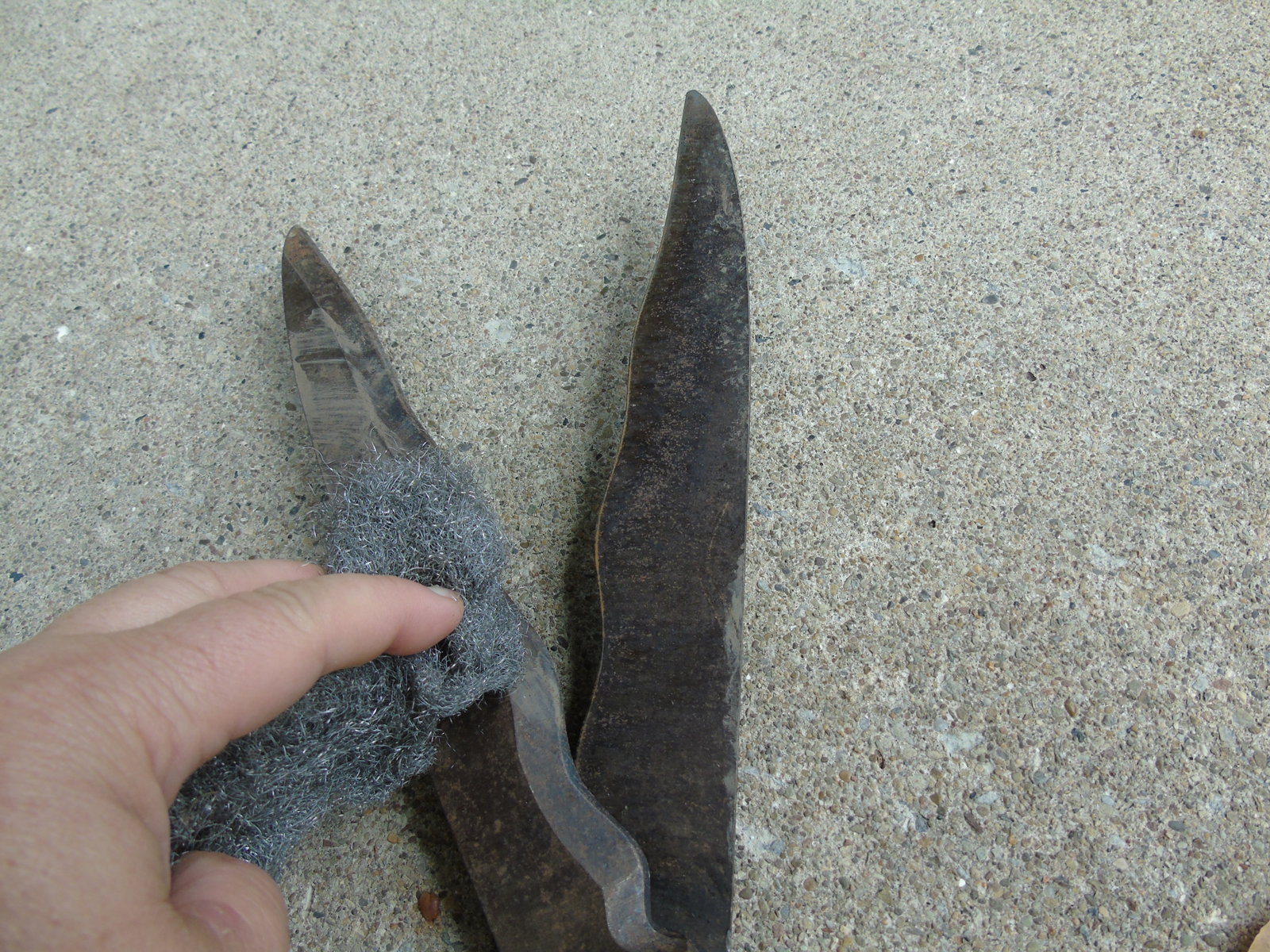As you start packing things away in the shed or garage in anticipation of winter, take a few extra minutes to clean up your garden tools properly and have them ready for action in the spring.
Shovels, rakes, etc.: The first step in cleaning up your shovels, rakes, hoes and garden forks is to use a hose or bucket of water to wash off all of the dirt remaining on them.
If there is still some dirt remaining after rinsing them off, you may need to use a stiff bristle brush to give it a more thorough scrubbing.
The second step is to take this opportunity to sharpen the shovels and hoes. It really isn’t that difficult to do it yourself.
You can use either a file, a wet stone or a sharpening tool like the ones used to sharpen pruners to put a good edge on shovels or hoes. Sharpened tools will mean not having to work as hard in the spring.
If your shovels, rakes or hoes are starting to get rusty, there is a simple way to eliminate it. And you probably already have it in the house.
Place your tool in a pail or tote and cover the metal part with white or cleaning vinegar. Let it soak in the vinegar for 12 to 24 hours depending on how rusty the tool is.
You will see that some of the rust will vanish. Remove the tool and use a stiff bristled brush or a piece of steel wool to remove the remaining rust.
Once cleaned up you can rub some 3-in-1 All Purpose Oil on the metal and leave it on all winter.
To keep the tools from rusting over winter, you can also take a large pot or pail and fill it with sand. Add about one to two cups of vegetable oil to the sand and mix them together.
Insert the shovel, rake or hoe into the sand/oil mixture to coat the metal part of the tools. Pull the tools out of the sand and leave this mixture on them over winter and it will stop rust from forming.
If the wooden handles are feeling rough, causing blistered hands, take a piece of sandpaper and rub it up and down the handle (with the wood grain) several times to smooth it out.
To help the wood from drying out over the years, you can also put some linseed oil on a cloth and rub into the handle.
Shears, secateurs, loppers: Again, with your pruners, make sure you wash off any soil that may be remaining on them. To clean up the blades, use some steel wool to remove the sap.
If the blades have become rusty over time, follow the procedure above by soaking the blades in vinegar.
Once most of the rust has come off, use a piece of steel wool, scrub it back and forth, and the rest of the rust should come right off. I also have heard that Scrubbing Bubbles toilet cleaner works well for removing rust.
Now that the blades and handles are all cleaned up, it is a good time to sharpen them up. For bypass pruners, where the two blades bypass each other, the blades are always beveled on the outer facing edge.
Always sharpen the beveled edge and never the flat, inward-facing edge.
Once the blades are sharpened, use a machine lubricant (like 3-in-1 oil) on all the working parts of the pruners (spring, bolts, screws etc). Your pruners are now ready to be stored for winter.
Lawn mower blades: After you have mowed your lawn for the final time this season, take a few minutes to clean up the blades before putting the mower away. Use a file to remove all of the dried grass cuttings from the blades and from the underside of the mower.
Your tools are now ready for winter.
Joanne Young is a Niagara-on-the-Lake garden expert and coach. See her website at joanneyoung.ca.











